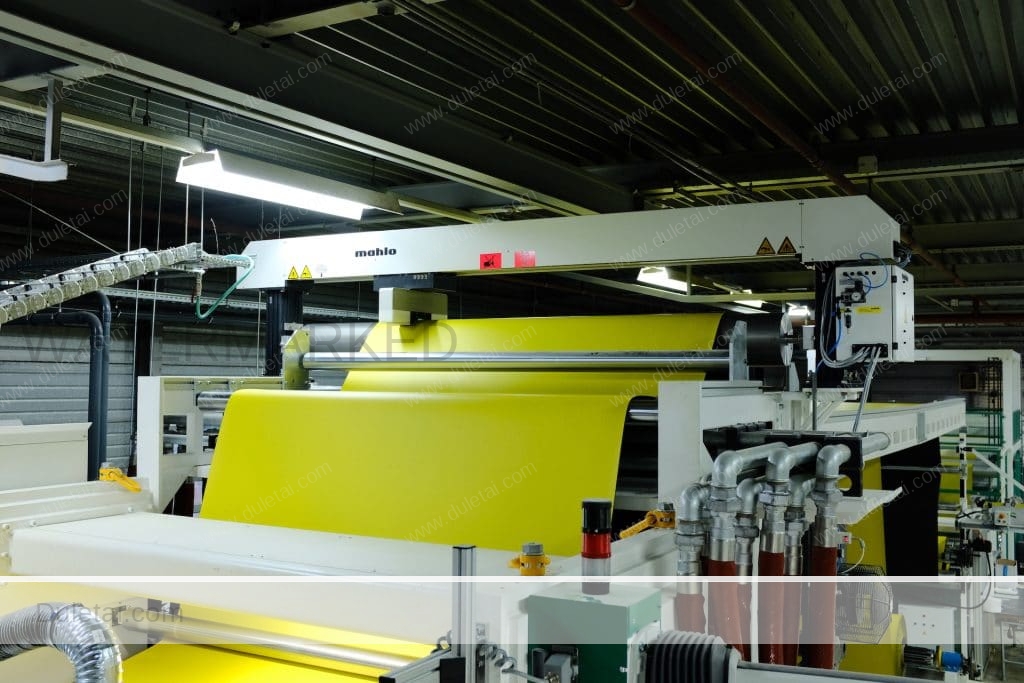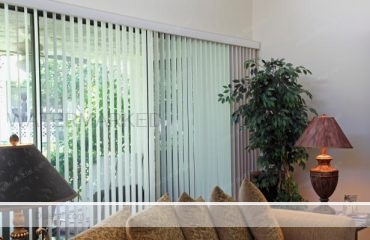Views: 456
The main difference between laminates and PVC coated material is in how the components are held together. Laminate material is held together by fusing or rolling a top and bottom material around the base cloth, simply fusing the laminate coating layers to each other through the open spaces of the base cloth. PVC coating, however, is bonded to the base fabric by using a special adhesive process.The first step in this process is to spread a high strength adhesive in and around each base cloth thread. Then the PVC coated material, which is in a liquid state, is spread over the glue. Finally they are all fused together using heat and pressure.

Laminated PVC is composed of a base polyester scrim that is placed between two or more layers of PVC film. These multiple layers of material in huge roll form are fused together in a PVC Laminating machine using extreme pressure and heat to create one solid piece of fabric. Often opaque layers and adhesives are additionally used to attain desired specifications. The formed material is passed over rollers to create the desired finished appearance (i.e. glossy, matte, etc.). The thickness of the raw PVC film on each side of the scrim added to the base fabric (scrim) result in a desired finished weight can add to its performance under Ultraviolet (UV) conditions (on the top side of the laminate) and abrasion resistance (on the bottom side of the laminate).
As a result of the application of a consistent layer/thickness of film on each side of the fabric, the film will fill into the hills and valleys of the base fabric creating a rougher texture (usually on the back side of the fabric). The narrower the openings of the mesh (base fabric) causes a reduction in the depth of the hills and valleys to fill and result a smoother the final appearance of the finished product. Unfortunately, the narrower the openings in the base fabric will in turn decrease the adhesion of the film to itself resulting in “delamination” or poor welding performance. Increasing the thickness of the PVC film will also result in a smoother product but will also add more weight to the finished fabric
Most all vinyl used in the construction of tents is inherently flame retardant, meaning that no additional flame retardant treatment is ever necessary during the lifetime of the fabric. Laminated fabrics are commonly used in the following weights: 12oz/sqyd, 16oz/sqyd, 18oz/sqyd and can be fabricated in any range from 10oz to 28oz.
PVC coated material is composed of a similar base polyester fabric that is passed through molten liquid vinyl and then extruded (or shaved) down to the desired thickness. As with laminated fabrics the coated formed material is passed over rollers to create the desired finished appearance. The resulting fabric is generally smoother on both sides when compared to laminate PVC. The thickness of the raw PVC film on each side of the scrim added to the base fabric (scrim) result in a desired finished weight can add to its performance under Ultraviolet (UW) conditions (on the top side of the laminate) and abrasion resistance (on the bottom side of the fabric).
The result of the extrusion or shaving of the PVC to the base fabric creates a PVC layer that is contoured to the base fabric, filling the valleys with PVC while the exposed surface remains very smooth.
Most all vinyl used in the construction of tents is inherently flame retardant meaning that no additional treatment is ever necessary during the lifetime of the fabric. PVC coated material are commonly used in the following weights: 18oz/sqyd, 20oz/sqyd, 24oz/sqyd and can be fabricated in any range from 16oz/sqyd to 32oz/sqyd.
Benefits & Draw Backs:
Laminated Fabrics:
Benefits
• Lower cost
• Greater availability (Domestic Production)
• Greater color selection
• Less stringent parameters for special order runs (often around 500yd minimums)
• Higher strength to weight ratio-Both tensile and tear strengths
• Most domestic patterning is based on 61” width goods (all manufacturers)
Drawbacks
• Rougher under side of fabric, less easy to clean
• Less resistance to pin holes (as a result of less PVC in the fabric)
• Less pliable with age (as a result of less PVC in the fabric)
Coated Fabrics:
Benefits
• Smoother finish (easier to clean)
• High tensile strength
• Greater durability
• Greater resistance to pinholes
• More pliable in cold weather conditions
Drawbacks:
• Higher cost – (weak Dollar, transportation, lead time, etc.)
• No domestic production
• Stringent parameters for special order runs (often around 5500yd minimums)
• Very few color options
• Fewer weights to choose from
• Weaker tear strength

